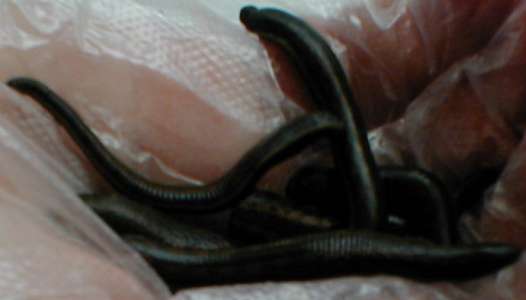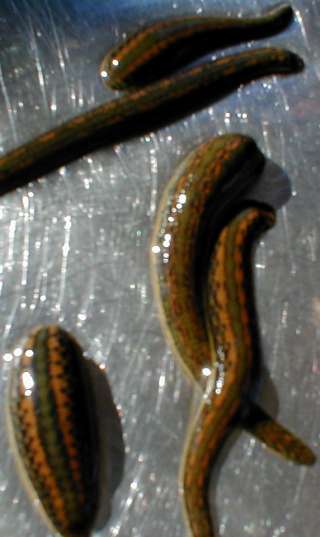 |
Medicinal Leech (Hirudo Medicinalis)
Roughly 600 leech species have been identified to date, but only about 15 are used in medicine. Leeches classified as “medicinal leeches”, Hirudo Medicinalis, in the narrower sense have been used to treat patients for centuries.
The first documented accounts of the use of Hirudo medicinalis for medicinal purposes date back to the time of Hippocrates. According to Sanskrit writings, Dhavantari, the father of Indian medicine, held nectar in one hand and a leech in the other. Leech therapy is also used in traditional Chinese medicine. Paintings of medicinal leeches have been found in pharaohs tombs. The Solomon Parables also describe leech treatment use in ancient medicine. Leech therapy in Greek medicine can be found in the poem Alexipharmacia by Nicandros. Roman physician Galen classified leech terapy as a method for achieving healthy balance. Avicenna also used leeches for healing aids. In the past leeches have proved to be the most effective treatment in many cases. Leeches were especially useful in battle wound treatment. European countries in the 18th and 19th centuries imported over 100 million leeches every year to satisfy high demand.
Today, doctors use leeches for treating abscesses, painful joints, glaucoma, myasthenia, and to heal venous diseases and thrombosis. Medical leeches are used in plastic surgery, for improving brain circulation and for curing infertility.
The general indications for leech therapy are:
Inflammatory Reactions
Heart Diseases
Rheumatic Diseases
Tendovaginitis and Tendinitis
Venous Disease and Varicose Veins
Arthrosis
Arthritis
Muscle Tension
Antidyscratic therapy ( blood purification and regeneration) of toxicoses and mental illnesses
Thrombosis and embolism
Passive congestions and spastic conditions
Vertebrogenic Pain Syndromes
Transudates and exudates

A simple principle lies at the heart of all hirudo-miracles. During the process of feeding, leeches secrete a complex mixture of different biologically and pharmacologically active substances into the wound. Hirudin is the best known component of leech saliva. Hirudin is sometimes used to describe all active substance in leech saliva. In reality, Hirudin refers only to one specific active substance in leech salive. Components of medicinal leech saliva that exert effects in the host's body are:
| Hirudin | Inhibits blood coagulation by binding to thrombin |
| Calin | Inhibits blood coagulation by blocking the binding of von Willebrand factor to collagen. Inhibits collagen- mediated platelet aggregation |
| Destabilase | Monomerizing activity. Dissolves fibrin. Thrombolytic effects |
| Hirustasin | Inhibits kallikrein, trypsin, chymotrypsin, neutropholic cathepsin G |
| Bdellins | Anti-inflammatory. Inhibits trypsin, plasmin, acrosin |
| Hyaluronidase | Increases interstitial viscosity. Antibiotic |
| Tryptase inhibitor | Inhibits proteolytic enzymes of host mast cells |
| Eglins | Anti-inflammatory. Inhibit the activity of alpha-chymotrypsin, chymase, substilisin, elastase, cathepsin G |
| Factor Xa inhibitor | Inhibits the activity of coagulation factor xa by forming equimolar complexes |
| Complement inhibitors | May possibly replace natural complement inhibitors if they are deficient |
| Carboxypeptidase A inhibitors | Increases the inflow of blood at the bite site |
| Histaminelike substances | Vasodilator. Increases the inflow of blood at the bite site |
| Acetylcholine | Vasodilator |
| Anesthetics subsctance | Anesthetic |








Tiada ulasan:
Catat Ulasan